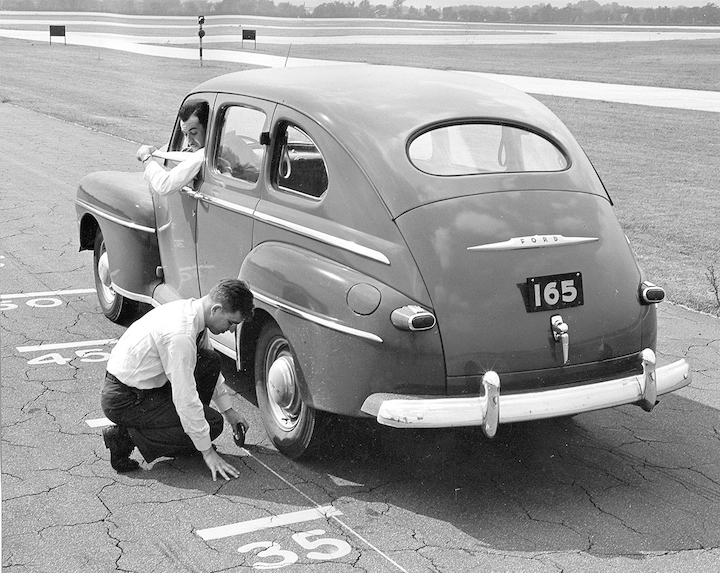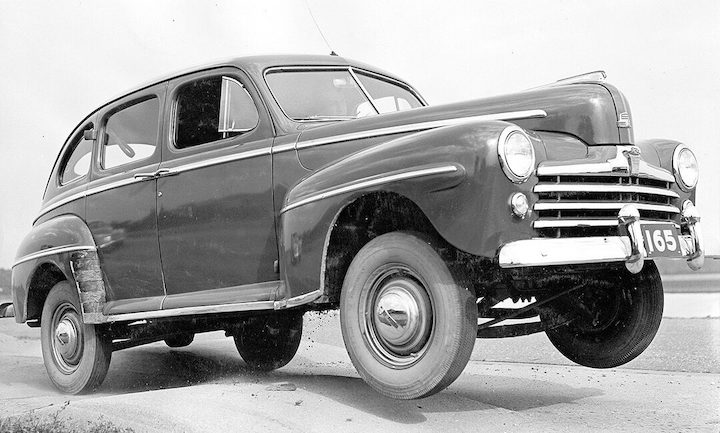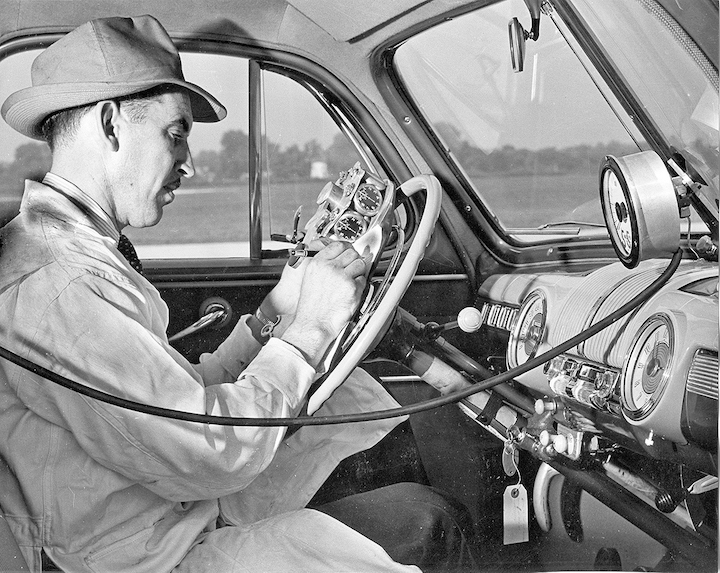Proving grounds torture testing convinced motorists to buy 1947 Fords

Braking distances were tested in wet and dry conditions
By Robert D. Cunningham
The Old Motor
(May 2, 2021) The Ford Motor Company introduced its first handmade, postwar Ford passenger car for the 1946 model year on June 2, 1945. The vehicle incorporated many leftover 1942 body parts. Decorative trim was nearly identical to the prewar vehicle except for a new massive, chrome-plated grille with red striping within the embossed accents.
Henry Ford II took the prototype home, and President Harry Truman received the first production version, which was a white Super DeLuxe Tudor sedan assembled on July 3, 1945. Ford advised motorists they would have to wait from one to two years before getting one of the new models due to the government’s mandated limited production and priority restrictions. Approximately 34,440 Fords were assembled during the 1945 calendar year as 1946 models.
For 1947, Ford implemented only a few changes, including 10 new colors and minor updates to the interior and exterior trim. Parking lights were relocated from beside the headlights to below. A new medallion replaced the previous hood ornament, and heavier guards were mounted to the bumpers. Bright fender strips were lowered, stainless-steel belt trim was widened, and the door handles were heavier.

Ultimately, Ford’s marketing department had precious little to crow about, so they humbly claimed: “Ford’s Finer for ’47” (which barely elevated the marque above the lowly Crosley, which advertised itself as “A Fine Car”). So, to boost consumer confidence and encourage sales to the most practical-minded of motorists, Ford published photos of the new ’47s undergoing extensive testing at their Dearborn, Michigan proving grounds. Two separate tracks were used – a high-speed course where minimum speeds of 60 mph were maintained for a minimum of 24 hours and a second track for lower rates of travel.
A “fifth-wheel” attached to the rear bumper of a 1947 Ford Fordor helped capture data associated with high speeds and fuel economy. Test driver Robert Mallow used a selection of stopwatches installed in the car to record acceleration in progressive speed ranges. At the same time, a meter attached to the windshield captured information from the fifth-wheel.

Test driver Robert Mallow used stopwatches and a meter attached to the windshield to record data transferred from the fifth-wheel
Mallow then piloted the car over a wracking “body-twist” course — 200 grueling trips around the track — subjecting it to alternating torsion stresses that tested the body’s integrity, frame, and points of attachment. The new Ford was also subjected to repeated trips through a “water bath” at speeds ranging from 40 to 60 miles per hour, after which Mallow and his associates carefully inspected the car’s interior for leaks. Braking tests in wet and dry conditions also received considerable attention.
Whether or not the car passed all tests was never reported, but the public apparently assumed the best. For the 1947 model year, Ford’s output skyrocketed to 429,674 vehicles—rather impressive sales from a menu that offered leftovers that were quickly losing appeal.
Robert D. (Bob) Cunningham is a commercial illustrator and author of several automotive history books.
